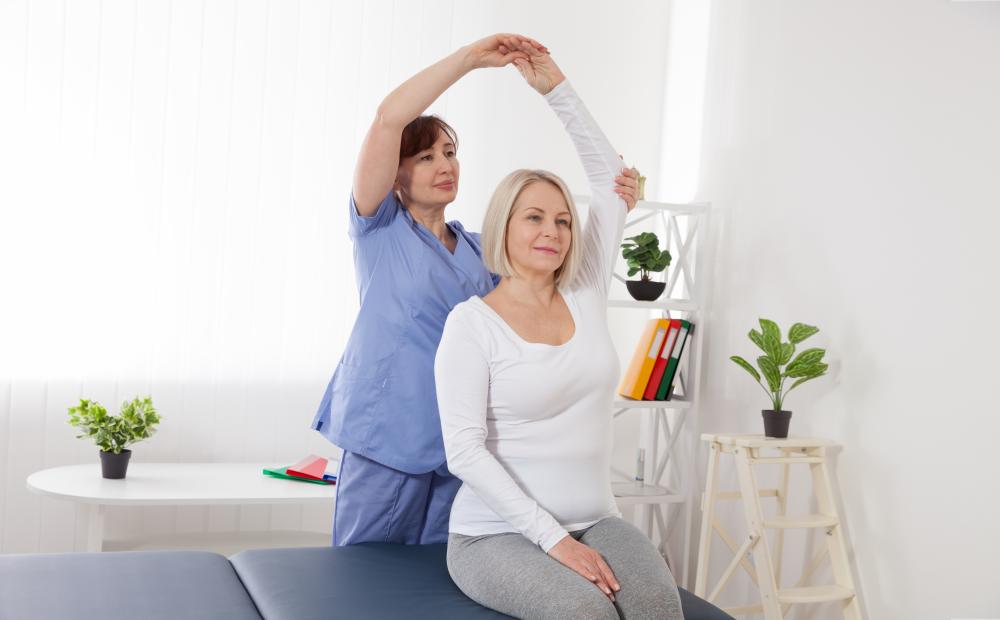No one plans for a sprain or strain. One minute you’re powering through a morning run or stretching into a yoga pose, and the next—snap, twist, or ouch—you’re sidelined with ice packs and ibuprofen. It’s frustrating, inconvenient, and let’s face it, kind of disheartening.
But what if getting injured wasn’t the end of your progress, but the start of a better plan?
Sprains and strains don’t have to knock you off course. In fact, with today’s smarter orthopedic care options, they can be the perfect excuse to slow down, listen to your body, and come back stronger. We’re not just talking rest and elevation anymore. From personalized rehab to stem cell treatments, modern recovery tools are redefining how active people heal—and how fast they get back to what they love.
Let’s unpack how.
Understanding Sprains and Strains: What’s Actually Happening?
Before we talk about healing, it helps to understand what’s going on inside your body.
-
- Sprains involve ligaments—the tough, fibrous tissues that connect bones at a joint. Ankle sprains are the most common, but wrists, knees, and thumbs are also frequent casualties.
- Strains, on the other hand, affect muscles or tendons. Think hamstring pulls or a sore lower back after too much lifting.
Both can range from mild (just a stretch) to severe (complete tear). Either way, they trigger inflammation, swelling, and a whole lot of discomfort. And if you’re over 30, your body’s natural repair speed isn’t what it used to be.
That’s where a smarter approach to healing comes in.
Why the “Just Ice It” Advice Doesn’t Cut It Anymore
We’ve all heard the standard advice: Rest, Ice, Compression, Elevation—aka the R.I.C.E. method. And sure, it’s useful in the first 48 hours. But beyond that, you need more than a freezer pack and crossed fingers.
Today, orthopedic experts are shifting toward active recovery. That means guiding the body through a structured healing process, not just waiting and hoping.
Here’s why this matters:
-
- Prolonged rest can lead to stiffness and muscle loss.
- Ignoring the injury can cause improper healing or repeat injuries.
- Modern interventions can speed up tissue regeneration and reduce pain naturally.
The goal isn’t just to heal—it’s to heal right.
What Makes a “Smarter” Healing Plan?
A smarter approach doesn’t mean pushing through pain. It means using the right tools at the right time.
1. Expert Evaluation
It all starts with a proper diagnosis. X-rays and MRIs aren’t just for dramatic injuries—they help assess the severity and create a personalized plan that targets the exact problem, not just the symptoms.
2. Movement (But the Right Kind)
Gentle mobility and physical therapy help restore function without aggravating the injury. Think guided stretches, resistance bands, and low-impact exercises—not jumping back into burpees on day three.
3. Regenerative Medicine
Here’s where it gets exciting. Treatments like Platelet-Rich Plasma (PRP) and Bone Marrow Concentrate (BMAC) are giving active adults real results—without surgery. These therapies use your own body’s cells to jumpstart healing in ways traditional approaches can’t.
Spotlight on BMAC: What It Is and Why It Works
BMAC—short for Bone Marrow Aspirate Concentrate—is a form of regenerative therapy that taps into the powerful healing properties already inside your bone marrow.
Here’s how it works:
-
- A small sample of your bone marrow is taken (usually from your pelvis).
- It’s processed to concentrate the platelets and stem cells.
- The concentrate is then injected directly into the injured area—say, a strained Achilles tendon or a sprained ankle ligament.
These cells help reduce inflammation, repair damaged tissue, and signal your body to ramp up its natural healing processes. It’s like sending a construction crew to the injury site instead of waiting for the repair to happen on its own.
And the best part? It’s minimally invasive and often done right in the clinic.
Why It’s Not Just for Pro Athletes Anymore
You might’ve first heard about regenerative medicine in the context of professional athletes—football players, tennis champs, or marathon elites using it to shave weeks off recovery time.
But now, many clinics are making BMAC and other cutting-edge treatments more accessible to regular people. Weekend warriors, busy parents, and active retirees are all seeing results.
Because the truth is, staying active isn’t a luxury. It’s essential to your physical, mental, and emotional well-being. So why settle for outdated treatment when smarter healing is within reach?
Common Injuries That Respond Well to BMAC
Not every sprain or strain needs advanced care. But if traditional rest and rehab aren’t cutting it, or if you’re dealing with repeat injuries, BMAC may be worth considering.
Here are a few conditions where it shines:
-
- Chronic ankle sprains
- Rotator cuff tears (partial)
- Tennis elbow
- Hamstring strains
- Knee ligament injuries (like MCL strains)
The earlier you seek expert input, the better the outcomes—especially when using treatments designed to support regeneration, not just symptom relief.
What About Recovery Time?
One of the biggest questions: How long until I’m back on my feet?
With BMAC, most patients experience:
-
- Reduced inflammation within days
- Pain relief within weeks
- Tissue improvement within months
Of course, everyone heals differently. Your age, overall health, and how closely you follow post-treatment care all play a role. But many people find BMAC speeds things up considerably—especially compared to long cycles of rest that don’t fully resolve the injury.
Staying Proactive: How to Avoid Repeat Injuries
Once you’ve healed, the key is not to end up back at square one.
Here are some pro tips to keep your comeback going strong:
-
- Warm up properly before workouts (yes, even brisk walks).
- Mix up your movements. Don’t only run, stretch, or lift—rotate.
- Strengthen supporting muscles. Weak glutes or core muscles often lead to strain elsewhere.
- Listen to your body. Pain is a whisper before it becomes a scream.
- Get expert eyes on your form. A physical therapist or sports specialist can spot risky habits before they become problems.
In short: Be kind to your body, but don’t baby it forever. Build back thoughtfully.
When to Seek Expert Care (Even If It Feels “Minor”)
A lot of us are guilty of brushing off aches and tweaks. “It’s nothing,” we say, until it becomes something. Here’s when it’s smart to get checked out:
-
- Pain that lingers more than a week
- Swelling that doesn’t go down
- Limited range of motion
- Recurring injuries in the same spot
- Pain that interferes with daily movement or sleep
Early intervention can prevent small issues from becoming chronic ones—and open the door to smarter solutions, like regenerative therapies, before surgery even becomes a discussion.
Final Thoughts: You’re Not Broken—You’re Rebuilding
If you’re dealing with a sprain, strain, or sports-related injury, it’s normal to feel frustrated. But healing isn’t just about waiting it out—it’s about choosing the right tools, the right team, and the right mindset.
Whether that means guided rehab, lifestyle tweaks, or innovative options like BMAC, your comeback isn’t just possible—it’s already in motion.
Because taking care of your body doesn’t mean slowing down. It means healing smarter, so you can keep doing what you love—on your own terms.
Want to learn more tips and tricks for loving your life?
Snag a free workbook and get inspiration on all the ways to love your life even more.
>>Click Here to Discover Additional Articles on Strategies to Get Your Life on Track <<









